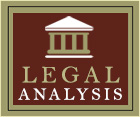

Sponsored Ads

Sponsored Ads

Damages are typically framed as a means of compensating the wronged party. However, they are also implemented for the purpose of punishing the offender. In this way, they’re a form of deterrent designed to send a message loud and clear. For a closer examination of what they are and how they impact settlements and verdicts, stick around.
What Are Punitive Damages?
Punitive damages, also known as exemplary damages, serve a unique role in the legal system. As mentioned, they're not about compensation but rather punishment and deterrence.
For instance, they can:
- Be intended to punish especially reckless or malicious conduct
- Serve as a public example to discourage similar actions
- Apply mainly in civil cases involving gross negligence or intentional harm
They’re a little like speeding tickets, in that you pay because you broke the rules and to remind others not to do it again. But punitive damages often involve substantial amounts that exceed mere fines.
In many cases, they signal society's disapproval of an action more powerfully than any apology could achieve. It's crucial for businesses and individuals alike to understand how their behavior might trigger such consequences.
For instance, knowing the difference between negligence and gross negligence is about the acts and scenarios which apply to each, as well as the repercussions which follow on from them. Cases of gross negligence can bring punitive damages along with them, and juries can determine the extent of these based on the severity of the negligent act.
The Purpose of Punitive Damages
As we’ve established, punitive damages go beyond simple reparation. They serve as a mechanism to reinforce societal standards and deter egregious behavior.
These damages can:
- Act as a strong deterrent against harmful actions
- Emphasize accountability for malicious or negligent acts
- Offer justice in cases where compensatory damages fall short
Let’s say someone knowingly sells faulty car brakes or defective motorcycle parts, risking lives on the road. Compensating victims doesn't capture the seriousness alone. Punitive measures emphasize prevention and responsibility.
This strategy is about setting an example that resonates throughout every industry. Courts leverage punitive awards to remind businesses and individuals that cutting corners at others' expense isn’t worth it.
How Courts Determine Amounts
Determining punitive damages involves a careful assessment by the courts. They aim to balance fairness with effectiveness.
Courts often consider:
- The severity of the defendant’s misconduct
- The harm caused to the plaintiff and others
- The wealth of the defendant to ensure meaningful impact
Judges and juries also look at precedent, weighing factors such as whether previous actions were ignored or repeated. They seek amounts that appropriately reflect the behavior without being excessive. These assessments help maintain judicial integrity while conveying societal disapproval clearly and effectively.
Impact on Legal Strategy
Punitive damages significantly influence legal strategies, reshaping how attorneys and clients approach cases.
Key impacts include:
- Encouraging thorough documentation of potential misconduct
- Promoting settlement negotiations to avoid hefty punitive awards
- Influencing jury selection and trial tactics for both sides
When defendants face potential punitive damages, they might opt for settlements to mitigate financial risk. On the flip side, plaintiffs’ lawyers could highlight egregious behavior in hopes of securing a larger award. These considerations mean that preparing for a case involves careful calculation and sometimes even creative legal thinking.
Notable Cases Involving Punitive Damages
Certain legal cases have set significant precedents for punitive damages, illustrating their impact.
Key examples include:
- The 1994 Liebeck v. McDonald's Restaurants case, where a hot coffee spill led to a $2.7 million punitive award
- Exxon Valdez oil spill litigation in 1989, resulting in an initially hefty $5 billion punitive judgment, later reduced by the courts
- Pennzoil Co. v. Texaco Inc., leading to a staggering $3 billion award due to interference with contracts, down from an initial $10.53 billion figure
These cases highlight how courts use punitive damages to address gross negligence or malicious intent and ensure corporate accountability. Such decisions resonate across industries as cautionary tales for ethical and responsible behavior.
Future Challenges and Trends
Several trends and challenges are looming on the horizon in terms of how punitive damages are dealt within in a legal setting.
Key developments include:
- Growing scrutiny over the size of awards
- Legal debates on constitutional limits to avoid excessiveness
- Increasing international considerations in globalized markets
Judicial systems grapple with balancing punishment against fairness, especially as public perceptions shift. Moreover, cross-border cases add complexity as businesses get to grips with differing legal standards. Attorneys must stay agile, adapting strategies to meet these emerging challenges while advocating effectively for their clients' interests.
Wrapping Up
In brief, punitive damages are a vital tool for reinforcing legal and ethical standards. They address misconduct by imposing financial penalties that deter future violations.
Today, understanding these damages is increasingly crucial. Staying informed about their implications can guide individuals and businesses alike in handling complex disputes responsibly.
Sponsored Ads

Sponsored Ads

